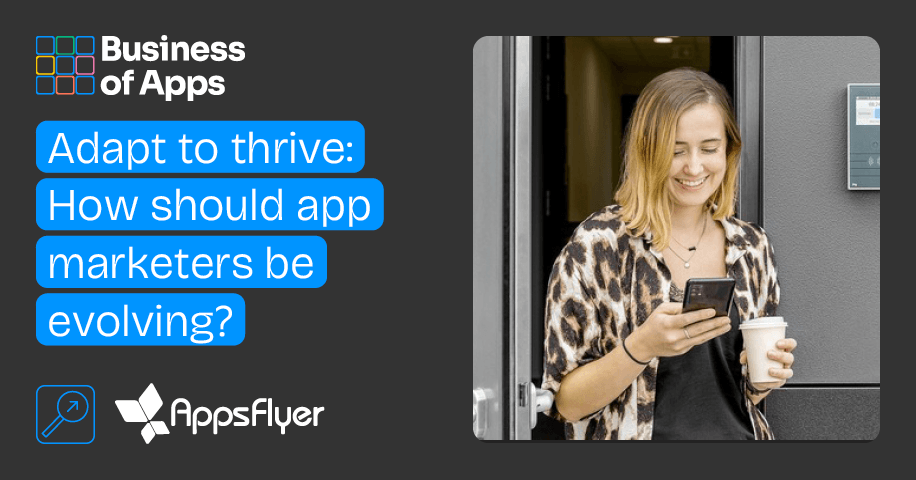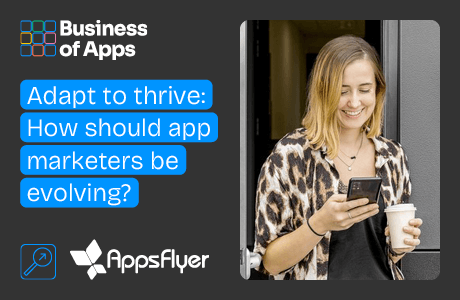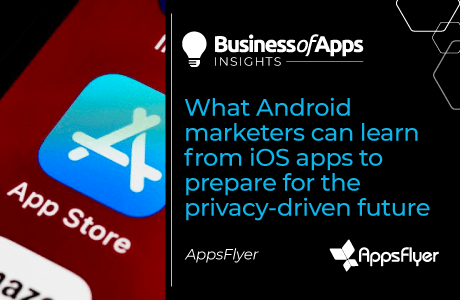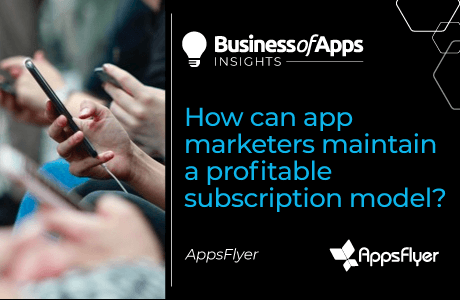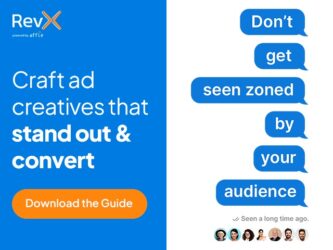Despite a whirlwind of unpredictable challenges from pandemic disruption to economic shocks and multiple privacy changes, it seems the app space is now on steadier ground. In late 2023, two-thirds (65%) of marketers surveyed by AppsFlyer had high hopes for 2024 budget growth, and our latest Performance Index show this optimism was well founded; with ad install ad spend for non-gaming apps across H1 rising by 18% year-over-year.
App marketers therefore have good reason to feel buoyant, especially as projections suggest annual in-app ad spend will continue to grow at least until 2029. Yet, while general trends are moving in a more positive direction, this doesn’t mean there won’t be pitfalls ahead.
Maintaining healthy spending pots will still depend on efficiently allocating budgets towards the channels and tactics most likely to drive high ROI. This makes it vital to guide decisions with a solid understanding of media dynamics and user behaviour.
To help marketers navigate shifting challenges and opportunities, we’ve gathered key insights from our recent analysis that illuminate the current state of app marketing.
Declining dominance for SANs
Self-attributing networks (SANs), are ad networks that advertise on their own platforms and act as both publishers and networks. They are often the first choice for marketers keen to optimise conversions on the most popular mobile operating systems: Android and iOS.
At first glance, our data suggests the status quo is unaffected, with SANs driving the largest share of Android installs across analysed verticals: eCommerce, finance, entertainment, and health and fitness apps. But a closer look at iOS devices indicates that previously established trends are shifting for Apple.
Although Apple Search Ads continue to fuel the majority of eCommerce and health and fitness installs, their dominance elsewhere is waning. Between Q1 2023 and Q2 2024, the share of Apple Search Ad installs on entertainment apps dropped significantly from 87% to just 28%. Over the same period, our data reveals that entertainment install figures for demand-side platforms (DSPs) and other ad networks spiked, soaring from 1% to 37% and 30%, respectively.
These findings reveal an emerging trend of non-gaming verticals taking a page from the gaming playbook by diversifying their media mix. While Apple Search Ads is still a sizable part of the mix, this may suggest that sustaining user growth as diversified strategies gain traction will mean using a wider range of quality media sources.
Owned media takes the spotlight
This time last year, app marketers were undergoing a crucial moment of data management reconfiguration. In the wake of third-party cookie bans on Firefox and Safari, many were grappling with rising signal loss accelerated by privacy initiatives from major technology players, including Apple’s SKAdNetwork (SKAN) and App Tracking Transparency Framework (ATT), as well as awaiting impacts from Google’s coming phase-out of its Google Advertising ID (GAID).
Consequently, it was no surprise that data privacy featured heavily in 2024 projections, with our survey respondents naming achieving ad targeting amid privacy-driven data restrictions as their number one challenge, closely followed by accurate measurement. It also made sense that a high proportion aimed to address the declining utility of cookie-based identifiers by better leveraging first-party data. In particular, almost half (44%) aimed to improve user retention by dialling up their focus on owned media.
The latest AppsFlyer data appears to show this new direction is delivering high dividends, as owned media strategies generate encouragingly robust results. So far, the second half of 2024 has seen web-to-app efforts power install conversion rates of 60% and 40% respectively for health and fitness and eCommerce apps. Similarly, email-to-app has fuelled remarketing gains of more than 30% across several verticals, including entertainment, health and fitness, and eCommerce. This tentative success underscores a clear need to lean further into smart collection and activation of first-party data, especially as winning and keeping users only gets tougher.
Playing every acquisition and retention angle
Sustaining user retention is the eternal problem of mobile marketing. In late 2023, we found that 95% of marketers intended to explore new methods of improving both acquisition and retention this year, with strategies aimed at covering a broad array of areas. In addition to boosting creative optimisation, plans involved expanding loyalty programmes, investing in paid remarketing and amplifying reach by branching out from familiar display and social and embracing connected TV (CTV), audio, out-of-home, and commerce media.
This multi-faceted approach has produced mixed results. Entertainment and eCommerce apps have taken the most balanced approach through a blend of owned media activities to secure new users – including web-, email-, and QR-to-app – and high remarketing adoption. Entertainment, however, has gained a stronger retention edge, bolstering weekly numbers of returning users by 19% from Q1 2022 to Q1 2024, in contrast to a 3% weekly fall for eCommerce, suggesting users have become loyal to specific entertainment apps thanks to the continuous stream of high-value content on their platforms, at least in the short term.
Meanwhile, focusing primarily on user acquisition has led to a severe weekly retention drop for finance apps of 28% since the start of 2023, with week 12 retention also down by 16%. Likewise, install-centric activity is a probable contributor to the 30% 12-week drop for health and fitness apps in the same period. When it comes to paying users, the tendency for these apps to operate on a subscription basis has helped them fare reasonably well in longer-term retention; as of Q2 2024 health and fitness apps held a nearly 30% rate of 21-day retention and finance apps saw just 5% of users uninstall after a month.
Equally, however, 30-day uninstall rates of 35% for health and fitness apps and 46% for entertainment apps highlight how shifts in purchase needs and interests take their toll, with subscription fatigue, heavy market saturation, cost-of-living pressures, and the “switcher mentality” all driving more users to bounce between apps.
Following the evolution curve
Taken together, our studies point to one main lesson for app marketers across categories: the huge importance of diversification. Depending on a limited range of tried-and-true methods isn’t enough in today’s ever-more fragmented and competitive mobile landscape, especially when combined with variable user habits.
Although loyalty hasn’t disappeared, earning it is a harder task, which means not just harnessing a range of media sources and channels to dial up campaign exposure, but also focusing on providing high-value interactions for potential and existing users. As part of that, ensuring meaningful and consistent personal resonance as third-party data access diminishes will mean broadening data sources to include a larger share of first-party insight.
Or, in other words: app marketers will have to adapt to survive and thrive.



